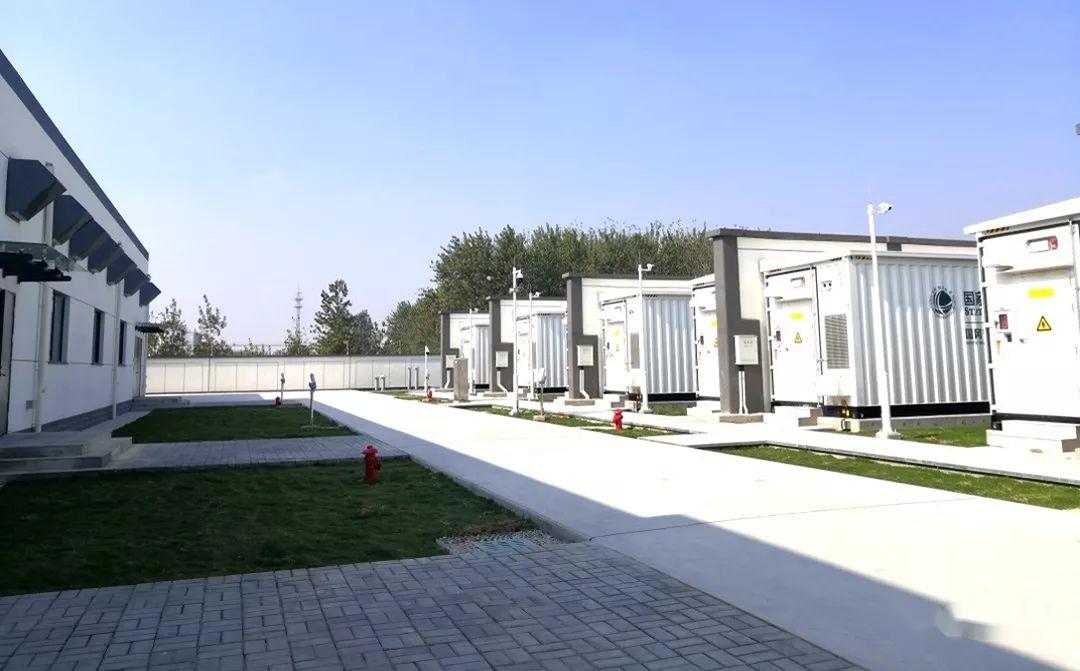

-
 ภาษาอาหรับ
ภาษาอาหรับ -
 เบงกาลี
เบงกาลี -
 จีน
จีน -
 ภาษาดัตช์
ภาษาดัตช์ -
 ภาษาอังกฤษ
ภาษาอังกฤษ -
 ภาษาฝรั่งเศส
ภาษาฝรั่งเศส -
 เยอรมัน
เยอรมัน -
 ชาวอินโดนีเซีย
ชาวอินโดนีเซีย -
 ภาษาอิตาลี
ภาษาอิตาลี -
 ญี่ปุ่น
ญี่ปุ่น -
 เกาหลี
เกาหลี -
 ละติน
ละติน -
 มาเลย์
มาเลย์ -
 โปรตุเกส
โปรตุเกส -
 ปัญจาบ
ปัญจาบ -
 ภาษารัสเซีย
ภาษารัสเซีย -
 สเปน
สเปน -
 สวาฮีลี
สวาฮีลี -
 แบบไทย
แบบไทย -
 ภาษาตุรกี
ภาษาตุรกี -
 ภาษาเวียดนาม
ภาษาเวียดนาม -
 ซูลู
ซูลู

ธ.ค. . 27, 2023 16:12 กลับไปที่รายการ
ไมโครกริดช่วยลดความซับซ้อนของพลังงานไฟฟ้าในอนาคตได้อย่างไร
โครงข่ายไฟฟ้าในสหรัฐอเมริกาเป็นแหล่งจ่ายไฟฟ้าที่เชื่อถือได้และไว้วางใจได้มานานหลายทศวรรษ อย่างไรก็ตาม เนื่องจากปัจจัยต่างๆ เช่น การลดคาร์บอนของการผลิต การใช้พลังงานไฟฟ้าในการขนส่ง และเหตุการณ์สภาพอากาศที่รุนแรง การผลิตและการจำหน่ายไฟฟ้าแบบรวมศูนย์จึงไม่น่าเชื่อถือเหมือนเมื่อก่อนอีกต่อไป
As a result, many government institutions, businesses, and communities are now turning to microgrids as a solution to keep the power on during outages. So, what exactly is a microgrid? A microgrid is an interconnected electrical system that consists of multiple generation sources and controllable loads. It can operate in parallel or independently from the utility grid and is designed to provide a reliable solution for unexpected power loss and energy management. The generation sources in a microgrid are often referred to as distributed energy resources (DERs), which are decentralized assets controlled as an integrated system.
ไมโครกริดโดยพื้นฐานแล้วคือโครงข่ายไฟฟ้าขนาดเล็กภายในโครงข่ายขนาดใหญ่ และสามารถทำงานโดยอัตโนมัติหรือ "แยกส่วน" จากโครงข่ายหลักเพื่อให้ระบบมีความยืดหยุ่นสูงสุด วัตถุประสงค์หลักคือการจัดหาพลังงานไฟฟ้าที่ต่อเนื่องและเชื่อถือได้ในกรณีที่โครงข่ายไฟฟ้าขัดข้อง เพื่อให้มั่นใจว่าการดำเนินงานที่สำคัญสามารถดำเนินต่อไปได้โดยไม่หยุดชะงัก
So, how does a microgrid actually work? A microgrid coordinates various power generation assets that can either work in conjunction with a utility provider to augment their production or operate autonomously to power critical operations. These assets typically include traditional fossil fuel generators, as well as renewable sources such as wind, solar, and energy storage. The microgrid works by generating and optimizing energy usage to provide resilient, efficient, and sustainable electricity solutions.
เพื่อให้ส่วนประกอบต่างๆ ของไมโครกริดทำงานในลักษณะที่ประสานกัน จึงมีการใช้ระบบควบคุมไมโครกริดอัจฉริยะ ระบบควบคุมเหล่านี้ถือได้ว่าเป็นวาทยากรของวงออเคสตรา DER เพื่อให้มั่นใจว่าอุปกรณ์ทั้งหมดทำงานร่วมกันได้อย่างราบรื่น

ข้อได้เปรียบที่สำคัญประการหนึ่งของไมโครกริดคือความยืดหยุ่นและการปรับแต่งได้ ไมโครกริดแต่ละตัวสามารถปรับแต่งให้ตรงกับความต้องการและข้อกำหนดเฉพาะขององค์กรที่ใช้งานไมโครกริดได้ โดยทั่วไปองค์กรจะจัดลำดับความสำคัญของเป้าหมายสามประการ ได้แก่ ความยืดหยุ่น ประสิทธิภาพ และความยั่งยืน ทั้งนี้ขึ้นอยู่กับลำดับความสำคัญขององค์กร อย่างไรก็ตาม การสร้างไมโครกริดที่ตรงตามวัตถุประสงค์ทั้งสามประการอย่างสมบูรณ์นั้นสามารถลดต้นทุนได้ ดังนั้น นักพัฒนาจึงทำงานอย่างใกล้ชิดกับองค์กรต่างๆ เพื่อทำความเข้าใจความต้องการเฉพาะของพวกเขา และระบุแอปพลิเคชันและสินทรัพย์ที่จำเป็นสำหรับการสร้างโซลูชันที่เหมาะสมทางวิศวกรรม
Resilience is a major concern for many companies and residential communities. With the increasing threat of cyber-attacks and extreme weather events, access to consistent and reliable power is crucial. Many states have recognized the importance of microgrids in reducing or eliminating power loss and have invested in them as part of their disaster-response efforts. Microgrids not only help bolster critical operations but also contribute to a more resilient energy infrastructure, ensuring that communities can quickly recover from a crisis.
Efficiency is another key benefit of microgrids. Governments, corporations, and institutions can achieve financial benefits through cost avoidance and external monetization. Cost avoidance involves maximizing the use of freely produced energy from renewable sources. When energy storage is added to renewable sources, it enables the stored power to be used during times of high utility grid energy costs, reducing peak demand charges and providing utility bill savings. External monetization occurs through participation in demand response programs or selling energy services to third parties.
Lastly, microgrids play a significant role in sustainability efforts. Many organizations have established goals to reach carbon neutral operations by a given date. However, one of the challenges with renewable energy sources like solar and wind is their intermittent nature. Microgrids can utilize a combination of renewable sources and battery energy storage systems to store excess energy during times of peak generation and discharge it when renewable sources are not producing enough to meet the demand. This helps organizations achieve their decarbonization goals while providing energy cost savings and operational resiliency.
บริษัทชั้นนำแห่งหนึ่งในอุตสาหกรรมไมโครกริดคือ ACDC พวกเขาเชี่ยวชาญในการช่วยลูกค้าสร้างโซลูชันพลังงานที่เชื่อถือได้ซึ่งปรับให้เหมาะกับความต้องการเฉพาะของพวกเขา ที่ Experience Center ลูกค้าสามารถสำรวจวิธีการต่างๆ ในการเข้าถึงพลังงานหมุนเวียน กำไรจากอุปทานส่วนเกิน และแม้แต่ใช้พลังงานภายใน 100 เปอร์เซ็นต์ โดยไม่ต้องรองรับกริดใดๆ เลย ตัวควบคุมไมโครกริดของ ACDC จัดการแหล่งต่างๆ อย่างชาญฉลาด เช่น พลังงานแสงอาทิตย์ การจัดเก็บพลังงาน การผลิต และการจัดหาสาธารณูปโภค เพื่อให้มั่นใจว่าไฟฟ้าจะมีความต่อเนื่องในระหว่างที่ไฟฟ้าขัดข้อง การออกแบบระบบโมดูลาร์ยังช่วยให้สามารถปรับขนาดและปรับแต่งได้ในอนาคต
โดยสรุป ไมโครกริดกำลังกลายเป็นโซลูชันที่ได้รับความนิยมมากขึ้นเรื่อยๆ เพื่อรับมือกับความท้าทายด้านความเชื่อถือได้ของกริดและไฟฟ้าดับ ด้วยการจ่ายพลังงานที่เชื่อถือได้ในระหว่างที่ไฟดับ ไมโครกริดช่วยให้มั่นใจได้ว่าการดำเนินงานที่สำคัญสามารถดำเนินต่อไปได้โดยไม่หยุดชะงัก นอกจากนี้ ไมโครกริดยังให้ประโยชน์มากมาย เช่น ความยืดหยุ่น ประสิทธิภาพ และความยั่งยืน ทำให้เป็นตัวเลือกที่น่าสนใจสำหรับรัฐบาล ธุรกิจ และชุมชนทั่วโลก
สินค้าที่เกี่ยวข้อง:
Self-Cooling-EN-215 ตู้เก็บพลังงานแบบกระจายภายนอกอาคาร - ชนิดจ่ายไฟ
จะถูกลบออกหากมีการละเมิด
เว็บไซต์อ้างอิง:https://www.eaton.com
-
Wireless DC Charging: The Next Frontier in Contactless EV Power Delivery
ข่าวAug.04,2025
-
Hybrid BMS Energy Controls: Integrating Renewable Energy Sources
ข่าวAug.04,2025
-
Blockchain for Secure and Decentralized EMS Power Systems
ข่าวAug.04,2025
-
AI-Driven for Smart Grids: Energy Management System (EMS)
ข่าวAug.04,2025
-
Advanced Distribution Management System (ADMS) Energy
ข่าวAug.04,2025
-
5G-Enhanced BMS Energy Savings: Ultra-Low Latency Control
ข่าวAug.04,2025